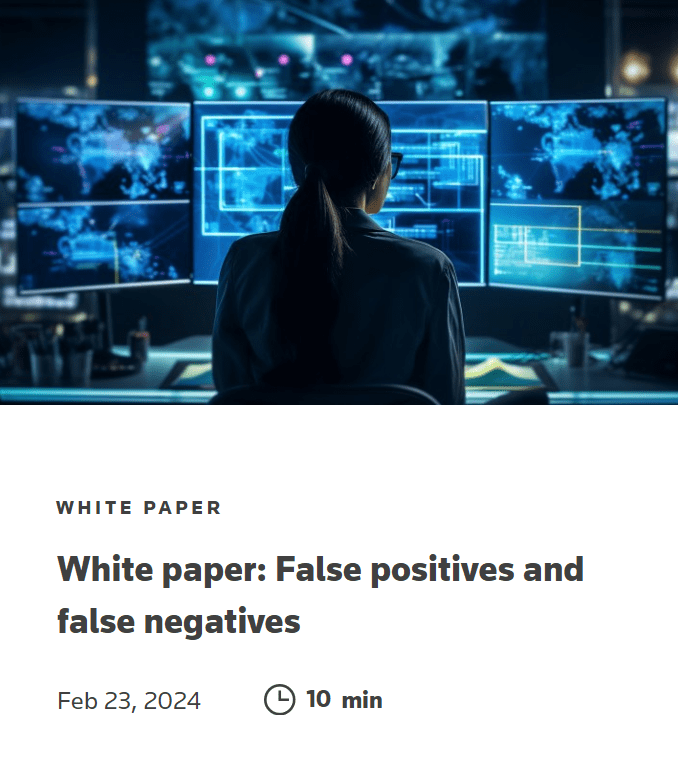One of the most important strategies a corporation can pursue is its ability to effectively prioritize mitigating the risk it faces in the normal course of operations while maintaining profitability. While technology can help — especially the use of more advanced risk screening methods driven by artificial intelligence (AI) — there is no substitute for adopting a comprehensive and proactive approach to risk management.
To foster that kind of approach, business leaders need to make sure the strategy is echoed throughout the company — among the employees’ workstations as well as the C-Suite offices — and that everyone sees their involvement as important to the success of the business. There are several individual activities that feed into a larger strategy of risk mitigation, and these are important steps to consider.
Establishing a framework
Establishing a process for risk assessment and identification is vital. Management should make sure that teams and team leaders are regularly assessing and identifying potential risks across all aspects of the business, including operational, financial, strategic, and compliance risks. In doing this, the company can better conduct thorough risk assessments to understand the likelihood and impact of each identified risk.
it is important to establish a risk management framework, by which team leaders create a robust risk management framework that outlines the company’s risk appetite, its tolerance levels, and what specific mitigation strategies it is considering. By establishing such a framework, leaders can assign clearly defined roles and responsibilities for risk management throughout the organization.
As part of this process, it’s smart to examine whether diversification and creating back-up plans might help the corporation both mitigate risk and create stability. For example, the corporation could look into diversifying its business operations and supply chains to reduce dependence on a single source. It could also implement back-ups in critical systems to ensure business continuity in case of failures or disruptions among its vendors or supply chain.
Leaders should understand how critical it is to plan for the unexpected and the unknown. Crisis and contingency planning should be undertaken and comprehensive plans for confronting such unforeseen crises should be developed. And once developed, these crisis and contingency plans should be regularly updated to ensure the organization is well-prepared to respond to any unexpected events. One good recommendation: Test and simulate crisis scenarios within the company to evaluate the effectiveness of the contingency plans and most importantly, whether employees and managers have the ability to carry them out.
Each of these steps outlined above go a long way in allowing a corporation to remain profitable while mitigating its risk. While these steps take little more than time and organizational investment, having these strategies in hand can help a corporation avoid costly damage and reputational ruin.
 |
Invest in technology
Making investments in the right technology, while admittedly laying out some costs, is an overall smart move because the ability to leverage the right technology tools, such as data analytics and artificial intelligence, in order to identify and monitor potential risks in real-time pays tremendous dividends.
For example, adverse media searches have become a critical part of the due diligence process for financial institutions and other organizations as an efficient approach to mitigate risk by avoiding potential alliances with criminal organizations and illicit actors, especially those who could be involved with money laundering, funding terrorism, or other financial crimes.
Now, as regulators both in the United States and elsewhere are seeing the importance of such screenings, many corporations are turning toward more advanced AI-driven tools to aid in this process. This is especially important to stem the problem of false positives, which is when inaccurate information surfaces during a screening, especially if older or legacy AI-based tools are used. Again, while these tools require some investment, this technology can be a lifesaver if it helps the corporation avoid gravely negative impacts or ending up in crisis.
Staying in compliance
It’s also important when mitigating risk to stay in compliance with changing regulatory rules. Corporate risk & compliance leaders should stay updated on relevant regulations and compliance requirements for their specific industry. Indeed, implementing robust compliance programs can reduce the risk of legal and regulatory problems and go a long way to improving profitability by reducing fines, additional taxes, and enforcement penalties.
Finally, it is critical when seeking to mitigate risk to establish a continuous monitoring system to track changes in the business environment and identify new, emerging risks. The effectiveness of a corporation’s risk mitigation strategies need to be regularly evaluated and adjusted as needed. Indeed, throughout all this process, it is essential for corporate leaders to view risk mitigation as an integral part of their decision-making process rather than a separate function.
By integrating these critical steps into their overall business strategy, corporations can create a resilient and adaptable framework that not only prioritizes risk mitigation but also supports sustained profitability by greatly reducing the cost of non-compliance, lawsuits, or legal action.
 |
Thomson Reuters is not a consumer reporting agency and none of its services or the data contained therein constitute a ‘consumer report’ as such term is defined in the Federal Fair Credit Reporting Act (FCRA), 15 U.S.C. sec. 1681 et seq. The data provided to you may not be used as a factor in consumer debt collection decisioning, establishing a consumer’s eligibility for credit, insurance, employment, government benefits, or housing, or for any other purpose authorized under the FCRA. By accessing one of our services, you agree not to use the service or data for any purpose authorized under the FCRA or in relation to taking an adverse action relating to a consumer application.









